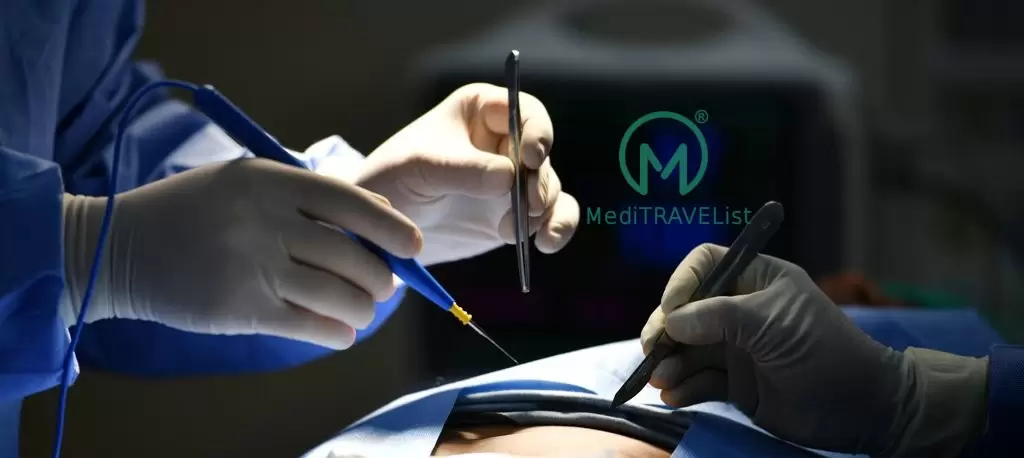
What is the Ligation Technique?
Ligation technique is an effective and reliable surgical intervention procedure used especially in the treatment of varicose veins. Varicose veins occur due to damage or weakening of the veins in the legs. This condition can affect the backflow of blood in the circulatory system, leading to pain, swelling and aesthetically disturbing images. The ligation method is a procedure often preferred by vascular surgeons in order to solve these problems.
Ligation, which aims to close the damaged vessels to ensure the proper functioning of the circulatory system, is usually performed in cases where complete removal of the vessel is not necessary. This technique provides many benefits both functionally and aesthetically. By connecting the vessels, blood flow is directed to healthy vessels. In this way, both the load on the circulatory system is reduced and it helps to eliminate the discomfort in the legs.
The ligation technique targets large and damaged vessels. It regulates the blood flow inside the target vessel in a healthier way. The binding process relieves pain, swelling and skin discoloration in the legs while improving circulation. This technique also contributes to the prevention of complications related to varicose veins and improves the quality of life of patients.
How is Ligation Performed?
The ligation procedure is a comprehensive procedure performed by a detailed planning and a specialized vascular surgeon. At the first stage, the patient’s medical history is considered and his current condition is carefully evaluated. Then, the areas where the damaged vessel is located are determined. Usually, several small incisions are made on the leg with the groin area. These incisions are located at strategic points and allow the surgical intervention to be performed precisely.
During the procedure, the damaged vessels are surgically connected, that is, the ”ligation” process is performed. This procedure aims to terminate the function of the damaged area by stopping the blood flow of the vessel. The connected vessel is left in place without damaging the healthy sections. Thus, the surrounding tissues are preserved. If a large part of the vein is not healthy, a method called “stripping” can be applied in this case. Stripping is the process of complete removal of the damaged vessel and can be performed in combination with ligation.
Ligation is usually performed under general anesthesia or local anesthesia. Ultrasound technology can also be used during the procedure. Ultrasound provides a clearer view of damaged vessels. In this way, it helps the surgeon to perform the procedure with high precision.
After the operation, the patient rests for a short time and is usually discharged on the same day. However, the healing process may take several weeks. During this process, patients are advised to use compression stockings regularly. Compression socks support blood circulation and speed up the healing process. In addition, it is important to avoid heavy physical activities during the postoperative period.
What is Ligation?
Ligation is the process of binding according to the meaning of the word. This technique is widely used in the medical world, especially in the field of vascular surgery. Ligation, which is an effective method for the treatment of ailments caused by varicose veins, especially in the leg area, is applied both to improve circulation and to provide a permanent solution.
The main goal during the binding process is to stop the flow of blood to a damaged or dysfunctional vein and maintain a healthy venous structure. This method can be applied by surgeons alone, or it can also be used in combination with other surgical methods, such as stripping. In some cases, the varicose vein is only connected, while in more advanced cases, it may be necessary to completely remove the vein by stripping.
Surgeons usually prefer ligation in cases where the vascular valves are healthy. Thus, the removal of unnecessary vessels is avoided and the protection of the surrounding tissues is ensured. The ligation procedure relieves the patient’s complaints and helps to achieve a more aesthetically pleasing result.
Ligation has a low risk profile as a minimally invasive surgical method. Most patients can return to their normal activities soon after the procedure. Improves blood circulation, eliminates problems such as pain and swelling caused by varicose veins. With the disappearance of the appearance of varicose veins, a more aesthetic appearance is provided on the legs.
After the ligation procedure, it is important for patients to pay attention to the healing process. Using compression stockings regularly during this process accelerates healing and supports blood circulation. It is also critically important to do the physical activities recommended by the doctor and avoid heavy lifting.
Adopting a healthy lifestyle can reduce the risk of varicose veins reoccurring. Regular exercise, following a healthy diet and avoiding standing for a long time can make a big difference in the postoperative process.
Ligation technique plays an important role in the treatment of circulatory system disorders as a reliable and effective method offered by modern medicine. It is critical for patients to be in close communication with their doctors both before treatment and during the recovery process for successful results. Ligation is a frequently preferred procedure in the treatment of varicose veins with its low risk and high success rate. With the adoption of a healthy lifestyle, the long-term effects of this treatment become more pronounced. A healthier and more comfortable life may be possible with the treatment of varicose veins.
Working Hours
- Monday: 09:00 – 18:00
- Tuesday: 09:00 – 18:00
- Wednesday: 09:00 – 18:00
- Thursday: 09:00 – 18:00
- Friday: 09:00 – 18:00
- Saturday: 09:00 – 18:00
- Sunday: Closed
